Categories
Latest Updates
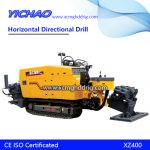
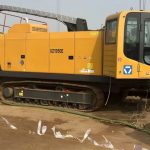
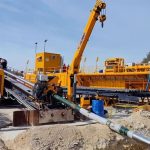
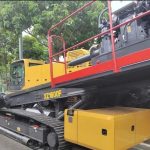
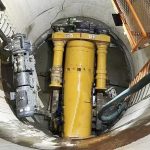
The urban drainage pipe network is an indispensable and important infrastructure of a modern city, a basic industry that has an overall and leading impact on urban economic development, the backbone of urban water pollution control, urban waterlogging and flood control, and an important measure of the level of modern cities. logo.
At present, the repair of damaged drainage pipes in most cities in China is to use the method of re-embedding the pipes after excavation. With the progress of urbanization, the urban underground pipelines are intricate, and the load of urban roads is becoming more and more serious, which makes the underground sewage pipes rupture. There were a number of technical issues in the repair process.
With the continuous improvement of urban construction, the technology of trenchless pipe laying, pipe repairing and pipe replacement does not affect the traffic, the pipe laying speed is fast, the efficiency is high, there is no environmental damage, and it does not affect people’s normal work and life. The advantages of it are more and more favored by the management department of the underground pipeline industry.
The trenchless pipeline repair technology first emerged in the oil and natural gas industry, mainly used for the renewal and repair of oil and gas pipelines, and later gradually applied to the renovation of the collapse of water supply and drainage pipelines, and with the application of new pipes such as HDPE pipes. was quickly promoted.
With the advancement of science and technology, the foreign trenchless pipeline repair technology has maintained a rapid development momentum, but the domestic underground sewage pipeline fracture repair trenchless pipeline repair technology is still in its infancy, and the gap compared with the foreign professional technology level is still However, the market prospect of this technology is very broad, and in-depth and detailed discussion and research are needed.
1) For the renovation of old and old pipeline facilities, it can meet the needs of structural renewal and expansion at the same time;
2) The trouble of demolition and the damage to the environment are avoided to the greatest extent, and the additional investment of the project is reduced;
3) Partial excavation of working pits reduces the amount of road excavation and the impact on the public transportation environment;
4) The use of hydraulic equipment has low noise, meets environmental protection requirements, reduces disturbing factors, and significantly improves social benefits;
5) The construction speed is fast and the construction period is short, which effectively reduces the project cost;
6) The project is safe and reliable, improves the service performance, and is beneficial to the later maintenance of the facility.
In view of the advantages of trenchless pipeline repairing technology of cement block blockage in underground sewage pipelines, investment in drainage pipelines, water supply stations and natural gas pipeline innovation has increased greatly in recent years. Although many countries in Europe have a downward trend in economy, but The pipeline repair industry is booming.
At present, the world’s more advanced underground drainage pipeline collapse repair pipeline trenchless repair technology has three categories (including more than 10 kinds of technology), one is to use resin curing method to form a new drainage pipeline inside the pipeline, such as CIPP , on-site curing and other processes; one is the use of small pipes through large pipes, and small drainage pipes are inserted inside the original pipes to solve urgent needs, such as short pipe lining, U-shaped pipe dragging and other processes; the last type is The spiral pipe method is used to form a new pipe inside the original pipe by the winding method, such as the spiral winding method.
The hose lining method, also known as the original curing method (CIPP), is to line the inner wall of the existing old pipe with a soft lining layer impregnated with liquid thermosetting resin, by heating (using hot water, hot steam or ultraviolet rays, etc.) or It is cured at room temperature to form a thin-layer pipe that fits closely with the old pipe. The pipe section has almost no loss, but its flow performance is greatly improved. There are two construction methods for the soft lining method, the reverse impregnated resin hose lining method and the CIPP pull-in method resin lining method.
1) Flip-impregnated resin hose lining method
This technology uses a fiber-reinforced hose or braided hose impregnated with a thermosetting resin impregnated with an impermeable membrane as the lining material. One end of the hose impregnated with resin is turned over and fixed at the entrance of the pipeline to be repaired with a clamp. Air pressure flips the resin-impregnated inner layer of the soft liner to the outside and bonds to the inner wall of the old pipe. When the soft liner reaches the end point, immediately inject hot water or steam into the pipe to solidify the resin, forming a hard lining with anti-corrosion and anti-seepage functions that is close to the inner wall of the old pipe. The flexibility and internal pressure of the resin tube prior to curing allows it to fill cracks, cross gaps, and bypass bends. After the resin is cured, the soft liner is formed into a new pipe with the same shape as the original pipe and a slightly smaller inner diameter than the original pipe.
2) CIPP pull-in method resin lining method
The resin lining method of CIPP pull-in method is to use a non-woven felt hose with an impermeable film. After being fully impregnated with resin, it is pulled into the pipeline to be repaired from the inspection well, and the hose is rounded by water or air pressure and cured. Afterwards, a firm and smooth new tube is formed to achieve the purpose of repair. Judging from the repair of old pipes abroad, due to the strong adaptability and reliable quality of this technology, the use of inspection wells can achieve a shovel that does not move the soil. Wide range of applications.
The loss of the overflow section of the pipeline repaired by the hose lining method is basically negligible, but its flow performance is greatly improved. This type of repair technology can repair underground pipes of various materials such as cast iron pipes, steel pipes and concrete. The pipelines that are concentrated or seriously occupied by ground facilities and cannot be repaired and updated by conventional ground excavation methods.
This repair technology has the advantages of all-weather construction, no joints and good fluidity, and can adapt to non-circular sections and curved pipe sections. High requirements, high cost, long resin curing time (generally more than 5h), and each section of construction braided tube needs to be customized separately.
The U-lined HDPE pipe repair technology is also commonly known as the tight-bonded lining method. When the diameter is reduced, the HDPE pipe is inserted into the old pipe through the tractor, and then opened by water pressure or gas (steam) pressure and a soft ball to open it and restore it to the original diameter, so that the HDPE pipe is swelled and attached to the inner wall of the old pipe. , and closely cooperate with the old pipe to form a “pipe-in-pipe” composite structure in which the anti-corrosion performance of the HDPE pipe and the mechanical performance of the original pipe are combined. After the pipeline is repaired and in use, due to the medium pressure in the pipe, the lined pipe will eventually stick to the inner wall of the original pipe.
This type of repair technology is generally suitable for straight circular pipes with less severe structural damage, and can be applied to various pipes with a pipe diameter ranging from 75 to 2000 mm and a pipeline length of about 1000 m. The technology has been widely used in water supply and drainage and other related pipe network repair work because of its good hygienic performance, small loss of flow cross-section, large deformation application range, and long-distance repair.
The short pipe lining method is to drag the short pipe into the old pipe while welding on site, and finally fill the gap between the old and new pipes with grouting. This repair method is usually applicable when the water flow is low. The schematic diagram of the process is shown in Figure 3.
This method was applied earlier in China, and the cost is relatively low, but due to the relatively large section loss after pipeline repair, it is gradually replaced by new technology.
The broken (cracked) pipe method is to use the broken (cracked) pipe equipment to break or split the old pipe from the inside, squeeze the old pipe fragments into the surrounding soil to form pipe holes, and simultaneously pull in the new pipe (same diameter or larger diameter). Pipeline update method.
This type of repair technology can be applied to the renewal of old pipes of ceramic, unreinforced concrete, asbestos cement, plastic or cast iron pipes, and the applicable pipe diameter ranges from 75 to 2000 mm.
The helical winding repair technology mainly uses the spiral winding method to continuously advance the strip-shaped profile through the pressing bayonet inside the old pipe to form a new pipe. The pipeline can be operated in the case of water (below 30%)
The spiral winding method is widely used at present. The inner wall of the pipeline repaired by this technology is smooth, the water passing capacity is better than that of the concrete pipe before repair, and the material occupies a small area, which is suitable for long-distance pipeline repair.
The stainless steel lining repair technology is to insert a thin-walled stainless steel pipe inside the old pipe, or to weld the stainless steel plate inside the pipe in the form of a coil, and form it as a whole, so as to achieve the purpose of preventing leakage and corrosion, and can also improve the original pipeline. pressure level. Because the stainless steel lining can prevent the corrosion of the inner wall of the pipeline, reduce the roughness of the inner wall of the pipeline, and increase the overflow of water, the lined pipeline is safer, lighter, more economical, and has a longer service life, so as to achieve the purpose of repair. Judging from the restoration of old pipes at home and abroad, this technology has been widely used in sewage pipelines because of its strong adaptability, reliable quality, and ability to carry water.
The above-mentioned several pipeline repair technologies are the most commonly used trenchless repair technologies in foreign countries. They are currently in the development stage in China, especially in key cities such as Beijing and Shanghai. Fix update. Process selection generally follows the following principles:
1) Select the appropriate construction technology according to the importance of the pipeline, the type of disease, the degree of damage, the scope of influence and the goal of renovation;
2) Comprehensive survey of surface and underground obstacles, road and traffic environmental impact;
3) Consider the importance and social impact of the area where the facility is located;
4) Meet the city appearance and environmental protection requirements.
In short, according to the actual situation of the project, select the feasible, economical and applicable trenchless pipeline repair technology.
The overall advantage of the trenchless repair method is that the negative impact of the repair is small, the site is less occupied, and the impact on the ground, traffic, environment, and surrounding underground pipelines is very weak. Therefore, it is imperative to promote the application of trenchless repair technology in the field of drainage pipeline repair.
The difficulty of popularizing the trenchless repair method is that the repair cost remains high, which makes many small and medium-sized cities stop. It is acceptable, and the main reason for the high cost is that the materials are completely imported. If China’s research on trenchless repair technology enters a new stage and materials can be mass-produced in China, the repair cost will be reduced accordingly. Therefore, the development of trenchless repair technology in China is predictable. In the near future, this technology will definitely be accepted by the drainage and municipal industries, and will be widely used in the repair of urban pipelines.
1) There is no unified government agency support. So far, there is no clear government organization for trenchless technology, and no special government agency has been set up for the specification formulation, development planning, and technology promotion of this technology, so that trenchless technology can be promoted across departments and industries. It requires repeated communication and is difficult.
2) There is no unified technical specification for trenchless construction. Due to the lack of a unified government organization, there is still no complete technical specification for trenchless construction in China that is applicable to municipal gas, heat, water supply and drainage pipelines, etc. Policy and regulatory environment for the development of trenchless technology. There is no basis in trenchless engineering design, construction, quality inspection and acceptance, project management and quota preparation, which brings great difficulties to government supervision and enterprise operation.
3) Low level competition. At present, some unit prices have no practical significance due to abnormal competition, no access system control and other reasons, which further increases the risk and creates a bad cycle, which also causes the whole trenchless industry to be impetuous, The main reason for the unsustainable and healthy development of the industry. Looking at the overall situation, starting from the quota and market analysis, formulating the trenchless budget quota and proposing the market guide price are the problems that need to be solved urgently at present.
4) Construction quality and safety hazards. Due to the lack of various trenchless construction specifications that can be followed, construction quality cannot be guaranteed, safety accidents occur frequently, and major accidents of water pipes, gas pipes and optical cables caused by trenchless construction often occur. In addition, in the pipeline repair construction, there have also been several large accidents.
5) Lack of corresponding professionals. With the rapid development of China’s trenchless industry, the continuous introduction of new technologies has created a serious shortage of technical and managerial personnel. The low quality of talents will not only cause various problems mentioned above, but also hinder the further introduction and development of trenchless technology in the future. Trenchless is an industry with high technical content, involving a wide range of knowledge and technical fields. However, due to the current chaos in the trenchless market and unstable benefits, trenchless personnel trained by national colleges and universities are directly engaged in non-excavation. Only a few people were working on the excavation.
6) There is no effective scientific and technological support platform for the promotion and supervision of trenchless technology. Trenchless construction requires a clear understanding of the underground facilities in order to achieve surgical results. At present, the main way to obtain information on underground obstacles is to detect underground pipelines before starting construction, but this method is difficult to obtain the support and cooperation of the owners of underground facilities. The location, age, and ownership of many pipelines are unknown, and there is almost no information sharing, which not only causes difficulties for trenchless construction, but also creates great obstacles for all underground engineering construction, which highlights the lack of scientific planning and effective supervision of underground facilities. . According to incomplete statistics, the annual direct economic loss caused by pipeline accidents during construction is about 5 billion yuan, and the indirect economic loss exceeds 40 billion yuan.
7) The investment in trenchless scientific research is seriously insufficient. As a social welfare-oriented undertaking, trenchless scientific research should be mainly invested by the government. However, due to the lack of clear and reliable competent administrative departments and funding channels, the research and development of trenchless technology lacks continuity and systematicity. .
As an important branch of trenchless technology, pipeline repair technology plays an important role in solving the problems existing in existing pipelines. At present, the pipeline repair technology is still in its infancy in China, and there is still a long way to go from the mature stage. There are still many problems to be solved, especially related technologies.
Technical and management agencies should formulate some practical standards and norms as soon as possible. Pipeline repair technology has great advantages in terms of economic cost, social cost and environmental cost, and has a wide range of applications. We look forward to seeing a better development of trenchless repair technology for pipelines in the near future. .
